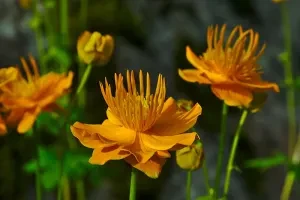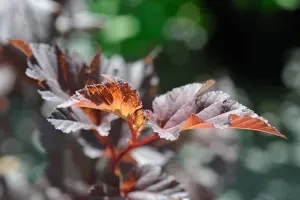Orange is one of the most versatile colors in the garden, fitting in with just about every season. Orange signals that spring is here with California poppies. Orange looks just at home in summer's sizzling heat and again in fall, when the softer sunlight illuminates fiery foliage.
Yet orange is the color people love to hate. When I ask a new garden-design client what colors they prefer, it's a safe bet they'll ask me to leave orange out. I've come to understand why. It seems many people have deep memories of uninspired rows of marigolds, not to mention 1970's shag carpeting.
I'm here to say that yes, orange can sometimes be dominating and bit garish, but it can also be soft, gentle and sophisticated. It can wake up a sleepy garden or harmonize with just about any other color.
Tips for designing with orange:
Orange, blue and purple are complementary colors (opposite one another on the color wheel). Together they create a burst of energy in a garden that looks flat.
Alternatively, yellow and red can be paired with orange to tone it down and smooth the scheme out.
Bright, hot orange, red and yellow can make a large space seem smaller, creating the illusion of intimacy in a large landscape.
Three favorite orange plants:
1. Vermillionaire cigar flower (Cuphea 'Vermillionaire'; full sun; low water; USDA Zones 8–9 or grown as an annual)
The flower's unique firecracker shape not only adds visual interest to your garden but provides delight for hummingbirds everywhere. Pair it with a brown-colored plant like Carex 'Toffee Twist' for subtle color echoes.

2. Siberian globeflower (Trollius ircuticus; part sun to shade; moist soil; Zones 3–8)
These clear, bright flowers add a much-needed burst of color to the late-summer garden. For an eye-catching combo, surround the orange flowers with deep purple or blue companions and watch your garden spring to life.
3. Coppertina ninebark (Physocarpus opulifolius 'Mindia'; full sun; moderate water; Zones 4–8)
Plant this tough cultivar of a native shrub as a gentle way to incorporate orange in the garden. Spring and summer bring forth a flush of soft apricot-to-copper foliage. It ends the growing season with a burst of fiery red leaves.
